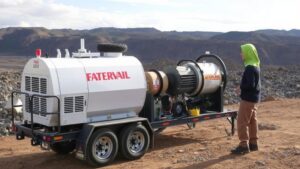The Evolution of Gold Prospecting Equipment Over Time
The Evolution of Gold Prospecting Equipment Over Time
Gold prospecting is an age-old pursuit that has transformed significantly across centuries. From rudimentary tools to sophisticated machinery, the evolution of gold prospecting equipment reflects advances in technology and changes in mining practices. This article will explore these developments, with an emphasis on key equipment throughout history.
Early Tools: The Beginnings of Gold Prospecting
The origins of gold prospecting can be traced back to ancient civilizations, where people used basic tools to extract gold from rivers and streams. earliest methods involved simple hand tools, primarily:
- Pans: The use of metal or wooden pans to sift through sediment in rivers.
- Sluice Boxes: Long, inclined troughs that separated gold from dirt using water flow.
These tools laid the groundwork for gold extraction. For example, during the California Gold Rush of the 1840s, thousands utilized gold pans and sluice boxes, leading to an estimated output of around $2 billion worth of gold from that region alone.
The Advent of Mechanical Equipment
By the late 19th century, the increasing demand for gold led to the development of more advanced mechanical equipment. The introduction of steam power and later, internal combustion engines, revolutionized gold mining. Significant innovations during this period included:
- Hydraulic Mining: This method involved using high-pressure water jets to dislodge gold-rich gravel from hillsides.
- Stamp Mills: Mechanical mills that crushed ore, making it easier to separate gold through various processes.
An example of hydraulic mining can be seen in California’s Sierra Nevada region, where massive quantities of earth were moved to help retrieve gold. This method, however, had significant environmental consequences, which eventually led to stricter regulations.
Technological Advancements in the 20th Century
The 20th century saw the introduction of innovative technologies that greatly improved the efficiency of gold prospecting. Some key advancements included:
- Electronic Detectors: The rise of metal detectors allowed for the detection of gold nuggets buried in soil and sand.
- Self-Contained Breathing Apparatus (SCBA): Used primarily for underwater mining, SCBA enabled divers to explore depths previously inaccessible.
The use of metal detectors became particularly popular in the 1970s, with a significant milestone being the invention of the pulse induction detector, which improved sensitivity to gold in mineralized ground. This innovation facilitated prospecting in areas once deemed unyielding.
Modern Equipment and Future Trends
Today, the landscape of gold prospecting equipment continues to evolve with the integration of digital technology and automated processes. Notable advancements include:
- GPS and Geographic Information Systems (GIS): These technologies allow miners to analyze geographical data for higher success rates.
- Advanced Recovery Systems: Innovations such as bioleaching and flotation processes improve gold recovery from ore.
Also, the rise of sustainability initiatives has led to environmentally friendly prospecting methods, such as using less water and maintaining biodiversity. The use of clean technology may also influence mining regulations moving forward.
Conclusion: The Ongoing Evolution
The evolution of gold prospecting equipment is a testament to human ingenuity and adaptability. From rudimentary panning techniques to sophisticated electronic systems, each advancement has shaped the industry significantly. Understanding this progression not only highlights the historical significance of gold mining but also points toward future innovations that may redefine the field.
For new prospectors and industry veterans alike, staying informed about these technological advancements is essential for maximizing efficiency and ensuring sustainable practices in gold exploration.
